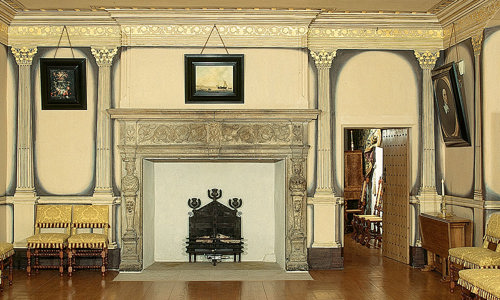History
Mar’s Wark was built as the townhouse of John Erskine, Earl of Mar, a moderate Protestant during the tumultuous years of the Scottish Reformation.
Mar was governor of Edinburgh Castle during the regency of Mary of Guise, from 1554 to 1560. He turned against her daughter, Mary Queen of Scots, after the murder of her second husband Lord Darnley in 1567.
He lost his governorship in Edinburgh, but became hereditary keeper of Stirling Castle – a position his ancestors had occasionally held since the reign of King Robert I. Mar was given custody of Mary’s infant son, James VI, after the assassination of Mary’s brother, Regent Moray, in 1571. Mar succeeded Moray as regent, but died just over a year later.
A grand residence
Mar was granted keepership of Stirling Castle in 1567, and probably began building Mar’s Wark, then known as Mar’s Lodging, soon after. The townhouse was close to completion in 1570, but may not have been completed to its original design. Mar died at the castle in 1572 and his widow, the dowager countess, took up residence at Mar’s Lodging.
James VI and Queen Anna stayed here in 1593 during preparations for their reception at Stirling Castle.
The 6th Earl of Mar – another John Erskine – refitted the house for use as a barracks during the 1715 Jacobite Rising, which he led. The failed rising resulted in his exile and forfeiture of estates, including Mar’s Lodging.
It was leased to the Town Council as a workhouse, where Stirling’s destitute were provided with food and board in return for labour, and around that time its name was changed to Mar’s Wark.
The mansion was damaged during the last Jacobite Rising of 1745–6, and the workhouse was moved elsewhere.
Proud mansion
The façade of Mar’s Wark has lost little of its splendour or visual impact, despite damage and abandonment. Its embellishments include:
- statuettes
- heraldic and inscribed panels
- dummy gargoyles carved to resemble cannon
- humorous rhyming inscriptions
- the royal arms and those of Regent Mar and his countess on the towers
A statue of a woman in a winding sheet is said to be Joan of Arc (Jeannie Dark), the figure possibly symbolising Joan’s suffering for her beliefs.
The façade is dominated by an arched pend, or passage, flanked by octagonal turrets. The entrance led into a courtyard, around which two-storey lodgings were arranged.
The identity of the architect is unknown, but James V’s palace at Stirling Castle likely served as inspiration.
Traditionally, the stone for Mar’s Wark is said to have been reused from nearby Cambuskenneth Abbey. At least one consecration cross can be seen in the stonework, lending credence to this claim.
















